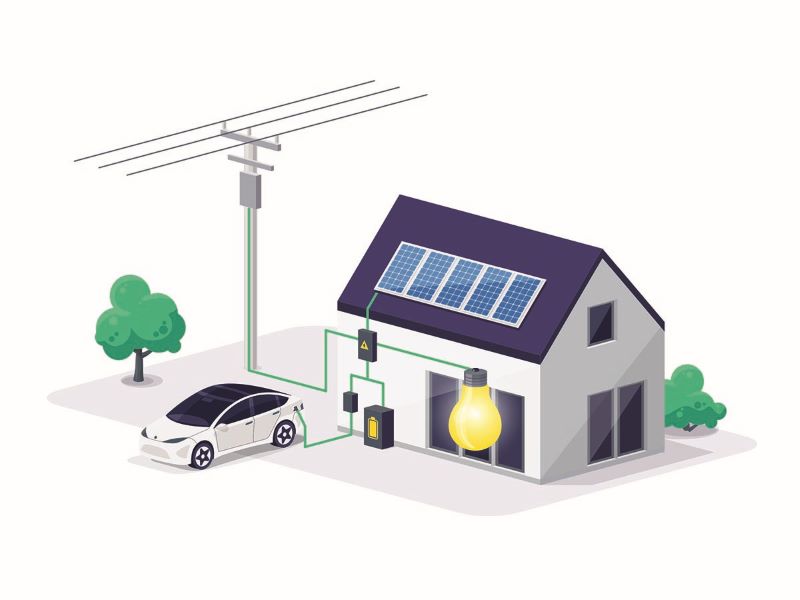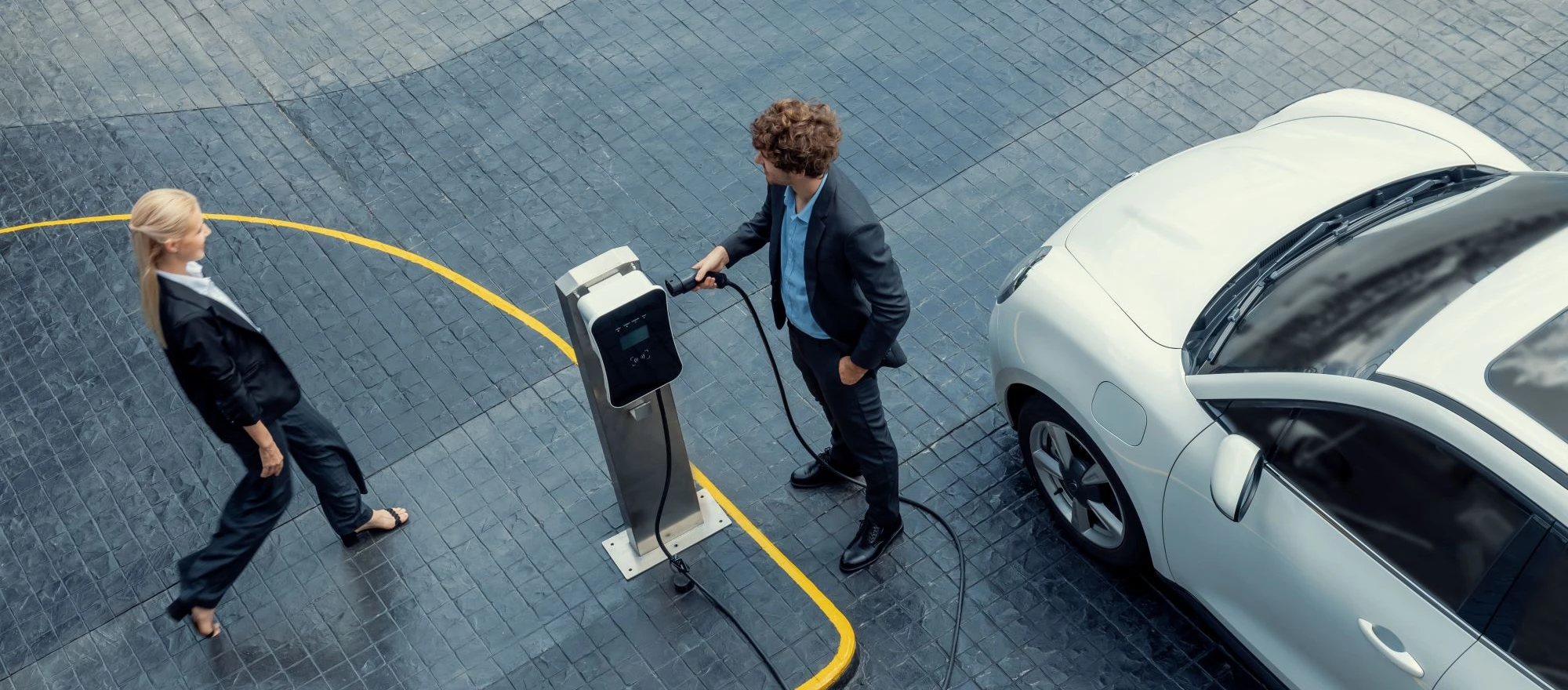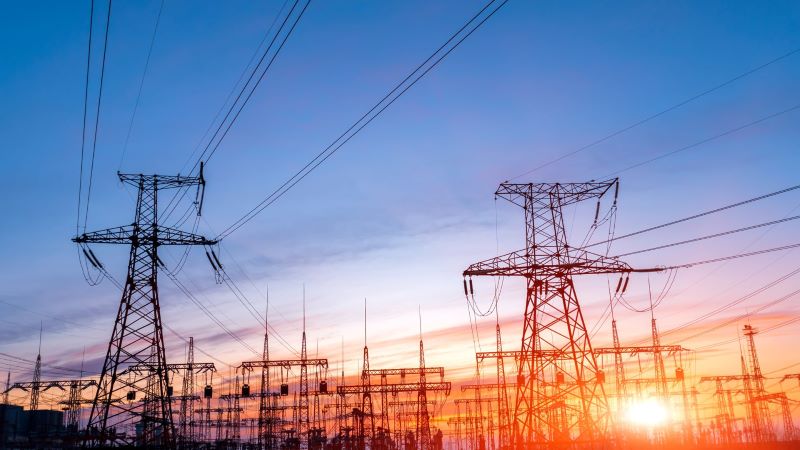Energy storage and management
At the heart of V2H and V2G is the concept of leveraging EVs as mobile energy storage units. This capability goes beyond traditional transportation needs, transforming EVs into dynamic assets for energy management. Through V2H and V2G technologies, users gain the ability to efficiently manage their energy requirements, utilizing their EVs as important assets that contribute to a lower energy bill and more grid stability. The management of EVs can be handled in an automated manner via Home Energy Management Systems. You can read more about this in our previous article.

Benefits
Grid stability and reliability
V2G can play a pivotal role in bolstering grid stability and reliability. By allowing EVs to feed the necessary energy back into the grid, these technologies contribute to balancing electricity supply and demand. This is particularly crucial during peak periods and in regions with intermittent renewable energy sources, where V2G can act as a stabilizing force.
Reduced energy costs
One of the significant benefits for homeowners is the potential for reduced energy costs. V2H and V2G technologies enable users (with a dynamic energy contract) to charge their EVs during off-peak hours when electricity rates are lower. This stored energy can then be utilized during peak hours, helping homeowners save money on their electricity bills or even allowing them to sell excess energy back to the grid at higher rates during peak periods.
Studies show savings on an energy bill between 30 and 85%. In order to realize these savings, a few investments need to be made. The main investments are an EV that has V2H or V2G capabilities (see later in the article) and a charging point that is advanced enough to perform V2H or V2G actions. At this moment, these investments are quite a financial burden for the average consumer, it is also difficult to accurately calculate the return on investment.
Environmental benefits
The environmental advantages of V2G are noteworthy. By promoting the use of renewable energy sources and optimizing energy storage and distribution, V2G contributes to the reduction of greenhouse gas emissions, aligning with global efforts to combat climate change. Renewable energy mostly comes from the sun and wind, which is mostly produced during the day when energy consumption is lower than during the evening. There is a clear time shift between consumption and production, which can be bridged partly through V2G and V2H technologies (through temporary storage). In 2022, Belgium got 28% of its energy from renewable energy sources; this is expected to keep increasing in the coming years.
Grid infrastructure
V2H and V2G technologies have the potential to revolutionize grid infrastructure. Through improved load balancing and reduced peak demand, these technologies may reduce the necessity for extensive grid upgrades, leading to a more sustainable and cost-effective energy distribution system. Connected to the improved load balancing is the contribution of V2H and V2G technologies to maintaining the frequency of 50 Hz, which is crucial to the electrical grid.
Challenges and limitations
Despite the promises, challenges and limitations must be acknowledged. Concerns about battery degradation, potential strain on EV batteries, and the need for advanced grid management systems pose hurdles that need to be addressed for the widespread adoption of V2H and V2G technologies.
Things to consider
Regulatory and policy considerations
Effective integration of V2H and V2G requires careful consideration of regulatory and policy frameworks. Governments play a crucial role in incentivizing these technologies and shaping their adoption through supportive policies that encourage investment and development. In Belgium, there is a big fiscal push towards the electrification of company fleets. This will increase the adoption of EVs significantly, as many people have a company car as part of their compensation package.
Vehicle compatibility
Understanding the types of EVs compatible with V2H and V2G technologies is essential. Not all EV models have the capability of V2H or V2G technology. It is up to the consumer to consider this when selecting a vehicle.
Infrastructure requirements
The successful implementation of V2H and V2G hinges on robust infrastructure. This includes home chargers with the correct technology, grid connections, and smart meters that can facilitate the efficient flow of energy between EVs, homes, and the grid. Special attention should be given to industrial estates where multiple EV charging stations are concentrated. Too many charging stations in the same area can cause the local grid to struggle.
Companies and consumers that already have local energy production (via solar panels or wind turbines) can aim to balance their production and consumption so as to limit the impact on the grid.
In 2023, Belgium saw a significant rise in EV numbers, reaching 138,749 vehicles, marking a 93.6% increase. This steep ascent accentuates even more the urgency of continuous innovation and infrastructure enhancement.
Commercial and Industrial Applications
V2G technologies extend beyond residential settings, finding applications in commercial and industrial sectors. Fleets of electric vehicles in these settings can provide substantial grid support, further enhancing the versatility and impact of V2G.
Conclusion
In conclusion, integrating V2H and V2G technologies marks a paradigm shift in how we approach energy consumption and transportation. The benefits, ranging from enhanced grid stability to reduced energy costs and environmental advantages, showcase the transformative potential of these innovations. While challenges exist, efforts to address regulatory, technical, and infrastructural aspects can pave the way for a future where electric vehicles play a pivotal role in transportation and shaping a more sustainable and resilient energy landscape.
We at Trilations are ready to support our clients in navigating the new possibilities of flexibility and managing their different assets.








